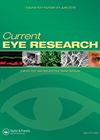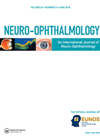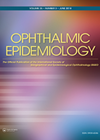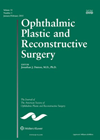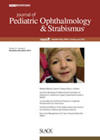Optic nerve head perfusion response to reduced blood pressure and increased intraocular pressure
The purpose of this prospective study was to test the hypothesis that blood flow autoregulation in the optic nerve head has less reserve to maintain normal blood flow where there is a blood pressure induced decrease in ocular perfusion pressure...
Literature review of isolated ocular motor nerve palsies
Patients aged over 50 presenting with isolated nerve palsies of the third (pupil sparring), fourth or sixth nerves, are often described as having microvascular extraocular palsies. This review looks critically at the evidence surrounding these microvascular non-arteritic extraocular palsies and...
Surgical outcomes in third nerve palsy
The authors of this article explore the factors associated with successful surgical outcomes in third nerve palsy, which is known to be difficult to treat. A number of case notes were reviewed for patients who underwent surgery or botulinum toxin...
Structural effects of migraine on the retina
Migraine is a common, chronic, multifactorial neuro-vascular disorder typically characterised by recurrent attacks of disabling headache and autonomic nervous system dysfunction (migraine without aura). Up to one third of patients also have neurological aura symptoms (migraine with aura). The objective...
Long-term retinal changes following unilateral retrobulbar optic neuritis
The aim of this study was to assess the longitudinal changes in retinal nerve fibre layer (RNFL) thickness after a first attack of optic neuritis and to investigate the impact of treatment on RNFL thinning at one year after the...
Which factors predispose to pingecula development in a rural Chinese population?
The authors report a cross-sectional study which aimed to determine the prevalence and risk factors for developing pingecula in a rural Chinese population near Shanghai. Nine hundred and fifty-nine persons were recruited from a single village and asked to complete...
The dynamic nature of orbital cavernous haemangiomas
This paper seeks to address the question of how much do orbital cavernous haemangiomas actually change over time, and if there are any identifiable factors which can predict which lesions will grow and which will remain stable. In particular, if...
Wide variation in the volume of the sphenoid trigone
This is a radiological study of the volume of the sphenoid trigone in normal subjects. The authors were interested to see how much volume could be gained by removal of the trigone during an orbital decompression for thyroid eye disease....
Amniotic membrane efficacy
This prospective randomised study evaluated the effect of amniotic membrane (AM) in reducing inflammation, fibrosis, adhesion formation and ocular movement restrictions following strabismus surgery. This study used 22 rabbits: all with superior rectus recession in both eyes with AM placed...
Cyanoacrylate vs. fibrin glue
This study compared the safety and efficacy of fibrin and cyanoacrylate glue for refixating the recessed muscle to the sclera in patients undergoing strabismus surgery. The fibrin group (a) included 21 eyes of 15 patients; mean age of 11.6 ±7.49...
Atropine penalisation for amblyopia in the UK
The authors aimed to determine the current clinical practice of atropine penalisation (AP) in the UK, to identify perceived barriers limiting use of AP as a first line treatment and ascertain whether any of the barriers could be resolved. An...
Treatment of infantile cataract with secondary IOLs
The authors examined whether secondary IOL insertion is helpful in the successful treatment of monocular infantile cataracts. Eleven children were reviewed: eight with cataract extraction at one to four months of age and three at five to seven months of...


